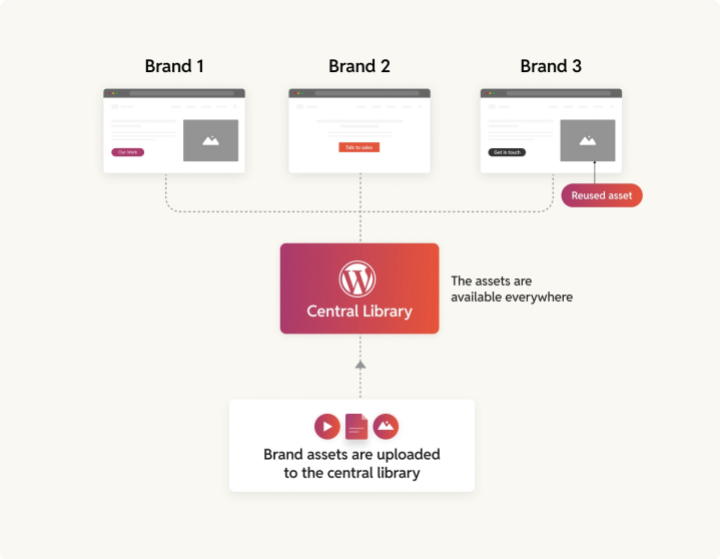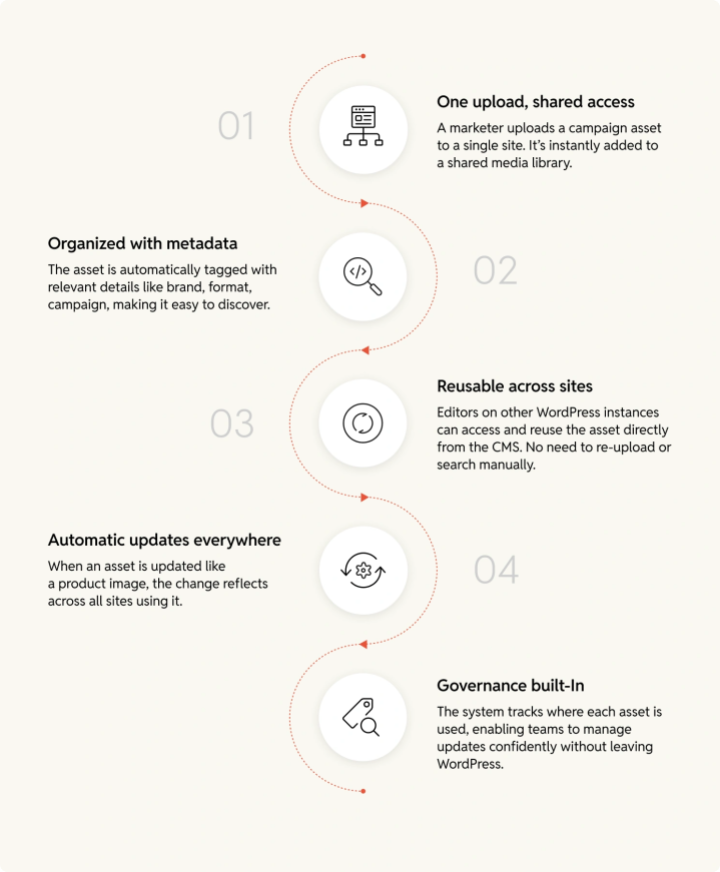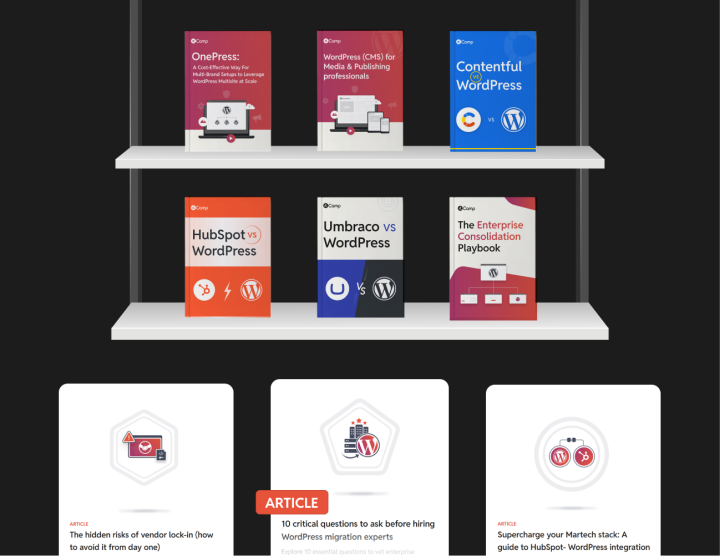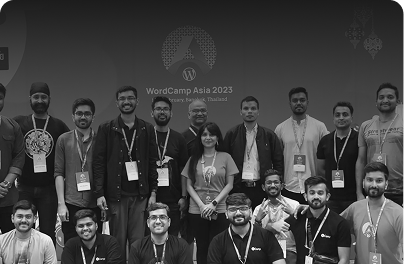Why centralized media is a strategic imperative for multi-brand organizations
Managing five, ten, or thirty WordPress sites, one for each brand, market, or campaign, often feels manageable at first. Content is flowing, microsites are live, and creative teams are publishing. On the surface, things work.
Until someone from brand governance asks: “Why is the old logo still live on the Australia microsite?” You investigate, and they’re right. That site never received the updated assets. Not because of negligence, but because every site maintains its own media library, and someone had to update it manually.
This is where WordPress media management shows its true nature. It’s not just a design detail. It’s structural. And when that structure is fragmented, your operations begin to show cracks.
Digital assets like images, videos, and brand elements are the connective tissue of modern brand communication. But when each site operates its isolated library, duplication, version drift, and last-minute fixes become the norm. And while these issues may seem small, they compound quickly as your brand portfolio scales.
Why WordPress multisite helps, but doesn’t fix the problem
WordPress Multisite simplifies many things: plugin management, theme control, and user access across a network. But when it comes to media, each site remains an island.
Every brand site has its own uploads folder. Every team maintains its visual library. Each campaign rollout includes repetitive tasks like locating, uploading, renaming, and syncing assets across multiple properties.
This might work when you’re managing just a few sites. But as your footprint grows, so do the cracks, in process, in compliance, and in speed.
You can’t automate consistency if every team is managing media in isolation. And consistency isn’t a nice-to-have; it’s the baseline expectation in any brand-led experience.
So what changes with centralization?
When the media is centralized, teams no longer operate in isolation. Instead, they build on a shared foundation, a central media library WordPress setup.

- Brand assets are uploaded once and are available everywhere.
- Editors can search and reuse approved assets directly from the CMS.
- Governance becomes part of the system, not something teams need to manually enforce.
- Updates to an asset are reflected across all instances automatically.
This isn’t just about saving storage space. It’s about making sure your teams aren’t stuck chasing down the right asset before every launch. It’s the foundation of WordPress asset governance.
For a deeper dive, see our media governance reference matrix.
How centralization works across WordPress sites
Let’s consider a typical multi-brand WordPress media management setup with three separate WordPress instances.

Previously, each team uploaded assets independently. This led to media duplication, inconsistent naming, and fragmented storage. Updates were manual, and visibility into asset usage was limited.
With centralization in place, a marketer uploads a campaign banner to one site. The asset is automatically added to the shared media library, tagged with metadata such as brand, format, and campaign. It becomes instantly available to teams working on other sites, no re-upload necessary.
Another content creator working on a different brand site can browse the shared library available to site editors and reuse the same asset. This eliminates redundant work and ensures brand consistency in WordPress media.
Behind the scenes, the system tracks where each asset is used. If a product image is updated, that change can propagate across every site in one step. Teams know what’s live, where it lives, and what needs to be updated, all without leaving WordPress.
Watch the demo below of a standard WordPress upload flowing into a shared media library. This video uses GoDAM, our internal media handling product, to demonstrate the concept, but it’s just one possible implementation.
How do teams usually get there?
There’s no one-size-fits-all approach to centralization. Depending on governance needs and platform maturity, organizations typically adopt one of the following models:
1. WordPress-native media sharing
Designate one site as the source of truth. Assets are shared via multisite-aware plugins, filters, or APIs. Everything stays within WordPress, familiar, fast, and extendable.
2. A dedicated content hub
Set up a central media and content hub that teams across the network can browse and pull from. Ideal for structured reuse of components, branding assets, and campaign materials.
3. External DAM integration
For organizations with complex requirements like licensing controls, territory-based delivery, and expiry rules, a Digital Asset Management (DAM) platform handles the heavy lifting, while WordPress acts as the frontend access layer.
The best setup depends on how your teams work today and how fast you expect them to move tomorrow.
Ask yourself: Is it time to centralize?
- Are brand teams still asking for logos over Slack?
- Does it take more than one step to update a product image across sites?
- Are campaigns delayed because of asset access issues?
- Is your legal team manually checking every subsite for expired visuals?
If you answered yes to any of these, you’re already paying the price of fragmentation.
Why OnePress makes this easy (without vendor lock-in)
We built OnePress to solve this exact problem for multi-brand WordPress portfolios. OnePress isn’t a product. It’s a modular framework.
Designed for enterprises running WordPress at scale, OnePress helps reduce overhead, increase speed, and give teams more flexibility, without requiring you to adopt a new platform or lock into rigid tooling. It adapts to your existing stack, workflows, and governance models.
What that looks like in practice:
- Works with both standalone sites and WordPress Multisite
- Lets teams reuse media from a shared library, directly in the WordPress editor
- Supports metadata, tagging, audit trails, and version control
- Integrates with CDNs and external DAMs
- Respects your existing workflows and permissions structure
You don’t need to replatform or retrain your teams. Just give them infrastructure that removes friction and adds clarity.
Explore the OnePress handbook to see how leading enterprises are evolving their WordPress strategy for scale.
Final thought
As brand portfolios grow, the ability to move quickly, while staying consistent, becomes a differentiator. Centralized media systems offer more than efficiency; they create alignment.
With the right infrastructure, brand governance becomes automatic, asset reuse becomes seamless, and teams are free to focus on execution, not coordination.
Let’s talk about what that would look like for your organization.
On this page








Leave a Reply